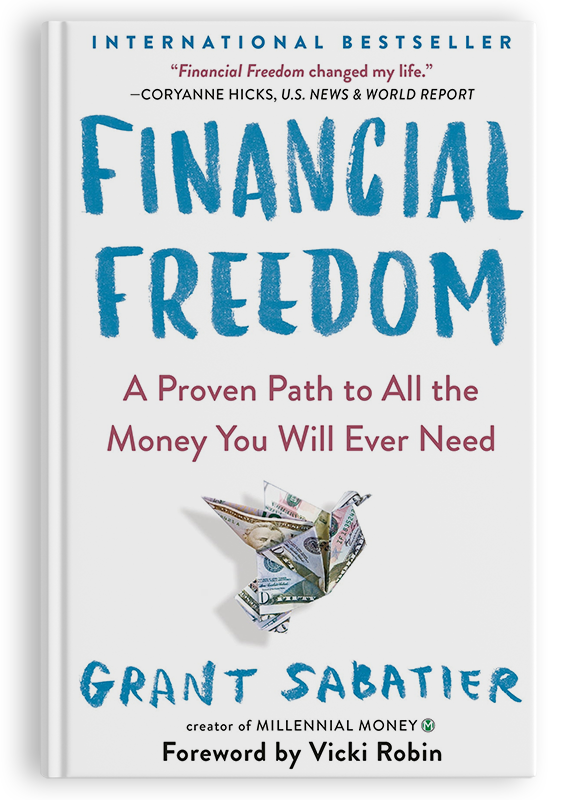Imagine achieving financial freedom, where you have control over your finances and are no longer burdened by debt or financial stress. In “9 Steps to Financial Freedom: A Proven Path to Wealth and Independence,” you will discover a comprehensive guide to help you navigate the complexities of personal finance. Whether you’re a college student or a seasoned professional, this article provides you with practical steps, strategies, and expert advice to help you achieve your financial goals.
From budgeting and managing expenses to investing and planning for retirement, this captivating article is your blueprint for creating a stable and prosperous financial future. Let’s embark on this journey together, as you learn the principles, develop essential financial habits, and gain the knowledge necessary to take control of your finances and create lasting wealth.
9 Steps to Financial Freedom: A Proven Path to Wealth and Independence
Discover the #1 System Everyone’s Raving About!
Step 1: Define Your Financial Goals
When it comes to achieving financial freedom, the first step is to define your goals. This involves identifying both your short-term and long-term objectives. What are the things you want to accomplish financially in the near future, and what are your dreams and aspirations for the long term?
It is essential to set specific and measurable goals. Instead of saying “I want to save money,” specify how much money you want to save and by when. By setting clear objectives, you can track your progress and stay motivated throughout your financial journey.
Creating a timeline for achieving your goals is also crucial. Determine when you want to achieve each goal and break it down into manageable milestones along the way. This will help you stay focused and maintain momentum towards your financial aspirations.
Step 2: Assess Your Current Financial Situation
Before you can make progress towards your financial goals, you need to assess your current financial situation. This involves evaluating your income, expenses, debts, and savings.
Start by calculating your net worth. Add up all your assets – such as cash, investments, and property – and subtract your debts. This will give you a clear picture of your overall financial position.
Next, evaluate your income and expenses. Track how much money is coming in and where it is going out. Identify any areas where you can cut costs or make adjustments to increase your savings.
Analyze your debts and savings to understand your liabilities and opportunities. Determine the interest rates on your loans and prioritize paying off high-interest debts. Assess your savings to ensure you have a solid foundation to build upon.

This image is property of Amazon.com.
Unlock the Secrets of Effortless Success Right Here!
Step 3: Create a Budget and Stick to It
One of the most effective ways to manage your finances is by creating a budget and sticking to it. A budget allows you to track your income and expenses, helping you prioritize your spending and allocate funds towards your goals.
Start by tracking your income and expenses. This can be done using a spreadsheet, a budgeting app, or even a pen and paper. Record all your sources of income and categorize your expenses, such as housing, transportation, groceries, and entertainment.
Once you have a clear overview of your finances, you can prioritize your expenses. Determine which expenses are essential and which ones you can cut back on. Look for areas where you can reduce costs, such as dining out less frequently or shopping for deals and discounts.
It’s important to allocate funds towards savings and debt repayment. Set a specific amount of money each month that goes towards building your emergency fund or paying off high-interest debts. Automate your savings and debt payments to ensure consistency and discipline.
Step 4: Pay Off High-Interest Debt
Debt can be a significant obstacle on your path to financial freedom. One of the essential steps you can take is to develop a strategy for debt repayment.
Start by listing all your debts, including credit card balances, student loans, and personal loans. Note the interest rates on each debt, as this will help you prioritize your repayment strategy.
Consider consolidating or refinancing your loans, especially if it allows you to secure a lower interest rate or better repayment terms. This can potentially save you money in the long run and accelerate your debt repayment.
Focus on paying off high-interest debts first. Allocate extra funds towards these debts while making minimum payments on others. As you pay off one debt, redirect the money towards the next one on your list. This way, you can build momentum and gain a sense of accomplishment as you progress towards your debt-free life.

This image is property of grantsabatier.com.
Want a Simple Way to Win? Click This!
Step 5: Build an Emergency Fund
Building an emergency fund is an essential component of financial stability. An emergency fund provides a safety net for unexpected expenses and can help you navigate challenging times without relying on credit cards or loans.
Aim to save three to six months’ worth of living expenses in an easily accessible account. This should cover essential costs such as rent or mortgage payments, utilities, groceries, and transportation.
Establish a separate emergency fund specifically for unexpected expenses. This can include car repairs, medical bills, or sudden home repairs. By having a dedicated fund for emergencies, you can avoid dipping into your long-term savings or going further into debt.
Step 6: Invest for the Future
Investing is a crucial step towards building wealth and achieving long-term financial freedom. By putting your money to work, you can grow your savings and potentially generate passive income.
Understand different investment options and choose the ones that align with your goals and risk tolerance. This could include stocks, bonds, mutual funds, real estate, or even starting your own business. Diversify your investment portfolio to spread out your risk and maximize potential returns.
Consider seeking professional advice from a financial advisor. They can provide insights and guidance on investment strategies that align with your goals. Regularly review and adjust your investment strategy as needed to ensure it remains aligned with your changing financial circumstances and objectives.

This image is property of Amazon.com.
The Only System You’ll Ever Need—Find Out Now!
Step 7: Maximize Your Income Potential
While managing expenses is important, increasing your income is equally crucial on your journey to financial freedom. Here are some steps you can take to maximize your income potential:
- Explore opportunities for career advancement or side hustles. Assess your skills and seek opportunities for growth or promotions in your current job. Additionally, consider taking on side jobs or freelancing gigs to supplement your income.
- Invest in your personal and professional development. Acquire new skills, certifications, or degrees that can enhance your career prospects and open up opportunities for higher-paying positions. Continuous learning and improvement can lead to increased earning potential.
- Negotiate your salary or freelance rates. Research industry standards and be prepared to negotiate for fair compensation. Don’t be afraid to advocate for yourself and the value you bring to the table.
- Consider passive income streams. Explore ways to generate income passively, such as through rental properties, royalties from intellectual property, or dividend-paying investments. These income streams can provide additional financial security and help you build wealth over time.
Step 8: Protect Your Assets and Plan for Retirement
As you accumulate wealth and work towards financial freedom, it’s crucial to protect your assets and plan for retirement. Here are some key considerations:
- Obtain necessary insurance coverage to protect against unexpected events. This can include health insurance, life insurance, disability insurance, and property and casualty insurance. Evaluate your insurance needs and ensure you have adequate coverage to protect yourself and your assets.
- Create a retirement savings plan. Determine how much money you will need for a comfortable retirement and set up a dedicated retirement account, such as an IRA or a 401(k). Contribute regularly to your retirement savings and take advantage of any employer matching contributions.
- Consider consulting a financial advisor for retirement planning. They can help you evaluate your retirement savings goals, develop a customized plan, and provide guidance on investment strategies to help you achieve those goals.

This image is property of Amazon.com.
Tired of Complex Methods? This is YOUR Solution!
Step 9: Maintain Financial Discipline and Review Your Progress
Achieving financial freedom requires discipline and commitment. It’s essential to stay focused on your goals and regularly review your progress. Here are some key steps to maintain financial discipline:
- Stay committed to your financial goals. Remind yourself of why you started this journey and the benefits of financial freedom. This will help you stay motivated and avoid unnecessary temptations or impulse purchases.
- Monitor your progress regularly. Track your income, expenses, and savings on a monthly basis. This will allow you to identify any areas where you may be falling behind or overspending.
- Adjust your plans as needed. Life circumstances can change, and it’s important to be flexible in your financial journey. Regularly reassess your goals, budget, and investment strategy to ensure they remain aligned with your current priorities and circumstances.
By following these nine steps, you can establish a solid foundation for financial freedom. Remember that everyone’s path to financial freedom may look different, and it’s important to personalize these steps to fit your own circumstances. With dedication, knowledge, and a clear plan, you can take control of your finances and work towards a future of stability, security, and independence.
Experts Can’t Stop Talking About This Revolutionary System!
